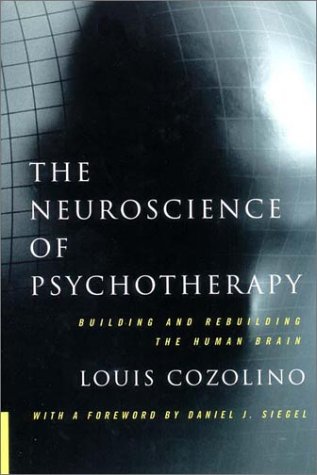This article by Kelly McKinney comes from
Somatosphere (published under a
Creative Commons license), a rather cool "
collaborative website covering the intersections of medical anthropology, science and technology studies, cultural psychiatry, psychology and bioethics," as their masthead proclaims. McKinney reviews two 2012 books on the use of psychoactive drugs on young people, accounts that are both personal (the authors were prescribed these drugs) and a cultural critique. Giving these drugs to children, adolescents, and teens has been a giant experiment, and for the most part the results have been frightening.
Coming of Age on Zoloft: How Antidepressants Cheered Us Up, Let Us Down, and Changed Who We Are, is the new (2012) book from Katherine Sharpe in which she examines the new normal of antidepressant use, from a personal angle (she began taking Prozac in college when they were prescribed for homesickness) and from a scientific perspective, with a lot of individual voices included as well.
The second book reviewed is
Dosed: The Medication Generation Grows Up by Kaitlin Bell Barnett, also from 2012. Like Sharpe's book, Barnett also has a personal story in this realm, and she includes a lot of other young voices who are struggling with identity issues and an ever-changing cocktail of powerful psychopharmacological medications.
Neither author appears to come out strongly against psychopharmacology for children, adolescents, and teens, a fact that may mean more people will actually read these books and take seriously the young people who speak within them.
Coming of Age on Psychiatric Meds
By Kelly McKinney
Coming of Age on Zoloft: How Antidepressants Cheered Us Up, Let Us Down, and Changed Who We Are
by Katherine Sharpe
HarperCollins, 2012
336 pp, US$14.99 paperback
Dosed: The Medication Generation Grows Up
by Kaitlin Bell Barnett
Beacon Press, 2012
248 pp, US$25.95 hardcover
Remarkably (or perhaps not remarkably at all if we take synchronicity seriously) two books came out last year, both on the same topic, both drawing on personal experience, both written by Ivy League educated, ambitious, sensitive, young American female journalists and both insightful, substantially researched and well-written. Dosed, by Kaitlin Bell Barnett, and Coming of Age on Zoloft, by Katherine Sharpe, give voice to and critically explore the personal experiences of people who are now in their twenties and thirties who took psychiatric medications growing up. Both authors contextualize these medication stories within a historical moment—the shift in recent history they each mark with the introduction of Prozac in the late 1980s in which children and adolescents began receiving prescriptions for psychiatric medications (and psychiatric diagnoses) in unprecedented numbers. Both also define their generation through this shift. As Sharpe remarks, “Antidepressants are the story of my generation, an invisible but very real strand woven through our collective experience” and Barnett, “For the first time in history…. millions of young Americans… have grown up taking psychotropic medications.” These millions, in her words, are “the medication generation.”

Furnishing statistics to support these claims both books leave no doubt in the reader’s mind that our popular awareness of these trends come not just from media hype but from actual ‘scientific’ research. For instance, studies show that in 2008, 5% of twelve to nineteen year olds in the US took antidepressants, and that in 2009, 25% of college students were taking antidepressants, while prior to the late 1980s psychiatric medications (with the exception of the relatively infrequent psychostimulant) were rarely prescribed to young patients. But the sheer numbers only tell us part of the story, leaving Barnett and Sharpe with more interesting questions to answer: how did this happen and what are the possible effects and meanings of this shift? And more specifically, what new insights can emerge when we examine the intersection of lived experience and broader societal structures?
For the first question, Barnett and Sharpe comprehensively synthesize in a clear fashion the now familiar multitude of factors identified by many social scientists that have converged to make this transformation possible, including the emergence of direct-to-consumer advertising, the rise of biological psychiatry over the psychoanalytic paradigm, the 1990s agenda-setting Decade of the Brain, the ever-widening categories of childhood psychopathology established and codified in the Diagnostic and Statistical Manual of Mental Disorders (DSM) and that lovely marriage between the pharmaceutical industry and psychiatry. Other conditions include the restructuring of health care system in the US that favor medication and short-term psychotherapies over other longer-term and non-pharmaceutical based alternatives, a shift toward more ‘child-centered’ parenting, disability and accommodation legislation, and more generally, the increasing tendency to understand and experience distress (and life!) in terms of individual biology, and finally, some particularities of American culture that differentiate the US from other ‘developed’ countries where psychiatric med prescription rates for youth have been much lower (Sharpe refers to Carl Elliott’s work for this last part). Both authors also speculate on whether young people are in some absolute way more distressed than previous generations by exploring recent trends in the mental health of college students, campus life and cultural expectations, and college mental health services (the answer? kind of yes, kind of no) and the sections in their books about this are quite compelling.
Moreover, while the authors acknowledge the value of the sometimes contentious debates around kids and meds and the anxieties and ambivalences permeating discourses about “over-medicated” children in the US, they both hope that their focus on the actual experiences of the young people who have taken the meds will bring a much needed perspective, one uniquely born out of the nuanced complexities of first person experience, to these often abstract debates. By focusing on the meanings of these medications for the young people who take them, in how taking meds have “shaped their experiences and relationships, their emotions and personalities, and perhaps, most fundamentally, their very sense of themselves (Barnett: x)” Barnett and Sharpe aim to (and do indeed succeed) in adding to the conversation on what the increasing medicalization of everyday life and the normalization of pediatric psychiatric medication consumption means for our society.
Neither intends her book to be “self-help,” but Sharpe nurtures the hope that readers who came of age with psych meds “will find these stories recognizable, thought provoking and ultimately affirming,” and that friends and family members will also benefit from them. For Barnett, a hope is that her book will help create a space of greater openness for people to discuss their medication experiences in their lives without feeling exposed, vulnerable, dismissed, or stigmatized.

Data from interviews with medical and social science researchers, parents, clinicians, and psychiatric medication consumers, scholarly research in the social sciences and medicine, and personal experience flesh out both works. Judiciously and with some restraint Barnett incorporates her own experiences as someone who began a psychiatric medication career in her late teens, when she began taking Prozac for “the exhausting and oppressive symptoms of [her] unhappiness” to make connections or identify contrasts with other medication experiences in developing her analysis. In contrast, Sharpe’s book is narratively structured as a memoir, supported by a diary she began in her late teens that was indispensable to her project.
Rather than limiting her sample to antidepressant users as Sharpe did (although Coming of Age shows how difficult it is to limit a sample to one type of medication, as many users take several different classes of meds over the course of their medication trajectories), Barnett gathers stories from individuals who have taken the gamut of psychiatric meds and focuses on just a handful of their stories, aiming for “depth over breadth.” Each chapter, organized around a theme, for instance, side effects, is devoted to describing the lives and experiences of “Paul,” “Claire” and a handful of other individuals and is woven together with information on, for example, sexual side-effects of SSRIs (a class of antidepressants) Barnett’s own medication experiences, and sometimes experiences of people she interviewed but who do not get the full length treatment. Barnett provides little raw interview data; instead, each person’s story is fashioned through her voice and story-telling abilities. She does a good job portraying these individuals and their struggles, likely faithfully, certainly with eloquence and at times so poignantly and powerfully, especially when describing suffering, that I had to pause in my reading at one point. However I felt something was also erased in that process. Everything was told in one voice—Barnett’s—and the homogeneity and polished coherence resulting from that strategy at times dampened my enthusiasm as a reader. I even found myself yearning for colorful punctures of individual voices in the masterful smoothness of Barnett’s writing.
Sharpe’s book, on the other hand, is written with less distance—the individual voices of her participants are represented (e.g., email transcripts), and she also makes more use of her own observations and feelings in ways that enhance, rather than detract, from the bigger story she is telling. In fact, this leads to one of the biggest differences between the two books in my opinion—the enjoyability quotient. Although I can say without reservation that Barnett’s book was much more enjoyable to read than most academic books, but no less scholarly, I really enjoyed Sharpe’s in that I-cannot-wait-to-curl-up-on-the-couch-with-a-hot chocolate-and-my-warm-dogs-next-to-me-to-read-this-book kind of way. I was even excited to get on the elliptical trainer at the gym just so I could continue reading Sharpe’s book, and I barely even glanced at the US magazine on the rack beckoning to me. Admittedly, I have scholarly and personal interests in this topic, but I also just love a good read. I also started this review by suggesting how similar these two books and authors are when in fact, in some major ways like this one, they are also quite distinctive.
Barnett and Sharpe conclude that taking psychiatric medications during the critical developmental years of adolescence, when questions of identity are most heightened and when huge changes are happening physically, emotionally and socially, intensifies their meaning and their legacies. They also conclude that the meanings and effects of medications are incredibly varied over time and across individuals, and that this is part of what makes debates about meds and kids much more complex than meets the eye. Sharpe suggests that many of the worst emotional struggles that take place in adolescence, for which diagnoses may be attached and meds prescribed, will soften over time, and even be resolved. (I kind of agree with her on this developmental hypothesis as someone who would not like to revisit her teen years or her twenties, and who has found that her overall sense of well-being seems to keep improving with the years). However, I think some people might disagree with Sharpe’s hypothesis and argue that mental illness is mental illness and is no better at 35 than 19. Moreover, after engaging in a deep and productive course of psychotherapy, Sharpe is persuaded to argue how much more expansive and resonating other vocabularies and relationships can be over those of chemical imbalances and with a doctor for a 15 minute medication visit. This might not be as true for young adolescents. Barnett, for one, preferred medication that worked well rather than what she felt as a teenager to be the intrusive, violating probe of psychotherapy and its more visible sign of her struggles.
Overall, Sharpe seems more wary of the tide of psychopharmaceuticalization than Barnett though by no means is she ideologically against psych meds. There is nothing polemical about either of these books, which is precisely something that makes each of them so respectable. In Sharpe’s last chapters, her writing gains momentum as she takes medicalization itself to task, and her chapter, “The Next Generation,” provides several excellent reasons why we should, too. My sense is that Barnett is a bit more conservative and careful and that she takes a position that at least appears to be more accepting of normative psychiatry than Sharpe.
I would recommend these books as valuable references for anyone doing research in this area. My sister read Sharpe’s book and liked it, and she is not an academic but an interested, curious person. I suspect that undergraduates might favor Sharpe’s book for some of the reasons I mentioned above, but sections of Barnett’s would work as excellent course readings as well.
Kelly McKinney teaches in the Humanities, Philosophy and Religion Department at John Abbott College in Ste-Anne-de-Bellevue, QC and is a research affiliate with the Culture and Mental Health Research Unit at the Jewish General Hospital and McGill University. Her more recent research focuses on adolescence, psychiatry, neuroscience, and subjectivity.
Standard Podcast [ 1:21:42 ] Hide Player | Play in Popup | Download
















